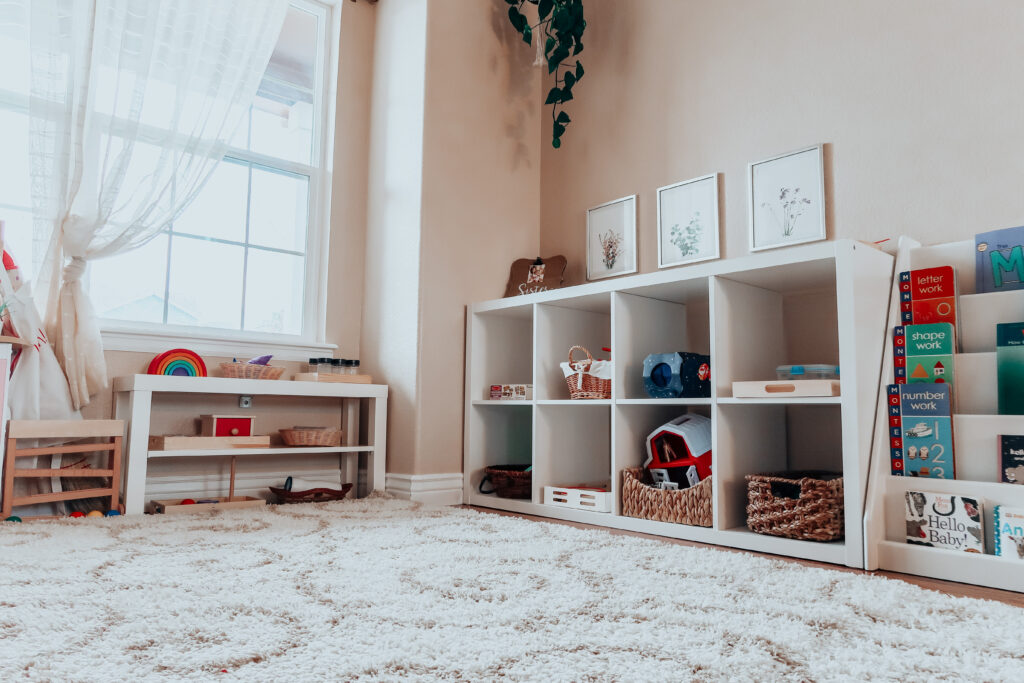
How can you implement Montessori principles at home?
January 29, 2024
Implementing Montessori principles at home involves creating a supportive environment that fosters independence, curiosity, and a love of learning. Here are practical steps to implement Montessori at home:
-
Create a Prepared Environment:
- Designate specific areas for different activities, such as a reading corner, art station, and practical life area. Ensure that materials are organized and easily accessible.
-
Child-Accessible Spaces:
- Arrange furniture and shelves at a child’s height to promote independence. Ensure that your child can reach and manage their belongings and activities without constant assistance.
-
Simplify and Declutter:
- Keep the environment clutter-free by providing a limited selection of toys and materials. Rotate toys periodically to maintain interest and avoid overwhelming the child.
-
Practical Life Activities:
- Integrate practical life activities into daily routines. Involve your child in tasks like setting the table, pouring water, sweeping, or folding clothes. These activities enhance motor skills and build confidence.
-
Child-Centred Activities:
- Follow your child’s interests when selecting activities and materials. Provide a variety of age-appropriate choices that encourage exploration, creativity, and problem-solving.
-
Encourage Independence:
- Foster independence by allowing your child to do things on their own. Teach self-care skills, such as dressing, washing hands, and preparing simple snacks. Encourage them to take responsibility for their belongings.
-
Promote Outdoor Exploration:
- Create opportunities for outdoor play and exploration. Allow your child to connect with nature through activities like gardening, exploring the backyard, or going for nature walks.
-
Focus on Process, Not Just Results:
- Emphasize the learning process over end results. Encourage your child to explore, experiment, and learn through hands-on experiences. Celebrate their efforts and curiosity.
-
Respect the Child’s Pace:
- Allow your child to learn and develop at their own pace. Avoid pushing them to achieve specific milestones quickly. Provide support and encouragement as they progress.
-
Model Positive Behaviour:
- Be a positive role model by demonstrating kindness, respect, and patience. Show your child how to handle challenges calmly and encourage them to learn from mistakes.
-
Establish Routines:
- Create consistent daily routines that provide structure and predictability. Routines help children feel secure and develop a sense of order in their daily lives.
-
Create a Language-Rich Environment:
- Surround your child with language-rich experiences. Read books together, engage in conversations, and expose them to a variety of vocabulary. Encourage storytelling and imaginative play.
-
Support Sensitive Periods:
- Recognize and support your child’s sensitive periods by providing appropriate learning materials and activities that align with their developmental needs and interests.
-
Involve Children in Decision-Making:
- Include your child in decision-making processes when appropriate. Discuss choices, listen to their preferences, and involve them in family decisions to foster a sense of responsibility.
-
Limit Screen Time:
- Minimize screen time and encourage real-world experiences. Provide hands-on activities and opportunities for creative expression instead of relying on digital devices for entertainment.
By incorporating these Montessori principles into your home life, you create an environment that encourages your child’s natural desire to learn, explore, and become independent. Montessori at home is about fostering a love for learning in a supportive and respectful atmosphere.


